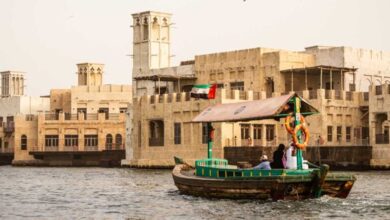Passion needed to save pond

The plight of ponds in many parts of the country has started affecting the life of the people adversely.
Atul Kanak
The plight of ponds in many parts of the country has started affecting the life of the people adversely. Some time ago when Bundelkhand faced a famine, the plight of the ponds of that region was also held responsible for its horrors. In 2017, the report of the Agriculture Department of Uttar Pradesh also said that in the last four decades, more than four thousand ponds in Bundelkhand were lost.
When people did not get the water they needed in their homes through taps, then wells, stepwells, tanks, kunds, ponds, johads or lakes used to fulfill the needs of the people. The structure of these water bodies varied in size and style, but the purpose of their construction was to collect rainwater. Not only did this provide an opportunity to store water at the core of the earth, but even on days when there was no rain, people could easily get water to meet the necessities of life. It was considered virtuous to have a water source for public use.
In texts like Atri Smriti, Vamana Purana, Skanda Purana, those who bridge the ponds or pollute their water are said to be guilty of sin, but after independence when cities developed, new settlements and markets were needed, the name of development But most of the ponds were either flooded or were neglected and put into disrepair. A major reason for this neglect was that the water needed to maintain the relationship of life with these ancient water sources, that water reached the man’s courtyard through a pipeline. Sometimes the easy availability of a person or thing also becomes the reason for its neglect. This is what happened with water.
Since the common necessity of regular visits to ancient water bodies to collect water for their needs, after the supply of water to households through taps, the days of neglect of not only ponds, wells, stepwells and cisterns, but even rivers began. The water of rivers started getting polluted, filth started accumulating in stepwells and cisterns and new constructions started by cutting or bridging the ponds. In many cities of the country, new colonies have been erected on the land of ancient ponds.
The example of Kota city of Rajasthan is noteworthy in this regard. Geographically, Kota is situated on the lowest part of the Hadoti plateau, which was once part of the historical Gondwana plateau. Whenever it rained in the upper part of the plateau, the water collected on the plateau ran rapidly down and created chaos in the settlements. In 1326, Prince Dhirdeh of the then Bundi princely state built thirteen ponds on this plateau, so that the water of the plateau could be stored. Throughout the year, these ponds not only provided water for irrigation and domestic needs, but also played an important role in maintaining the level of groundwater.
But over time those ponds got lost in the so-called development. Rang Talab, Anantpura Talab, Kala Talab are the names of good settlements today, but once there used to be full ponds in place of these settlements. A market was built in Chhota Talab, then Dakaniya Talab was bridged and a suburban railway station was built on it. Now the condition is that the groundwater level has gone down dangerously in many areas of this city situated on the banks of Chambal river.
However, this suffering is not only of Kota. The plight of ponds in many parts of the country has started affecting the life of the people adversely. Some time ago when Bundelkhand faced a famine, the plight of the ponds of that region was also held responsible for its horrors. In 2017, the report of the Agriculture Department of Uttar Pradesh also said that in the last four decades, more than four thousand ponds in Bundelkhand have been destroyed. There were many ponds in Chhattisgarh, which is called the bowl of rice. It is believed that a ruler named Pachimaha Dev had dug more than seven hundred ponds there. It is said about King Baland that he used to collect iron as tax from the common man and then got the pond dug. Many traditions of our social life are associated with ponds. In 1947, the number of ponds in India was twenty four lakhs.
The story of the construction of some ponds is very interesting. The Bhopal lake, also known as Bhoj Talab, is probably the largest pond in the country. It is said that once the Parmar ruler of Dhar district had a disease. Took many treatments but to no avail. Some saint said that if the kings bathe together with the water of 365 water bodies, then only they will be fine. As a result this pond was formed. There is a public opinion about Lakha Banjare’s pond located in Sagar of Madhya Pradesh that the king got the pond dug, but not a drop of water came out in it.
Somebody said that if a newly married couple swings a swing in the pond land, water will come out of the ground, but those who swing the swing will drown in it. No one was ready for this sacrifice. Then a banjara named Lakha asked his son and daughter-in-law to swing on the land of the pond for the public interest. It is said about a pond located in Hindauli town of Bundi district of Rajasthan that when the daughter of a banjara asked her mother-in-law why her mother-in-law came to the house with dirty feet, the mother-in-law taunted that which one is yours. Father has arranged water for us to wash our feet here? When the daughter-in-law’s father came to know about this, he got a pond built in the village. There is a pond in the historical fort of Narwar in Madhya Pradesh. Located near the palace of Nal Damayanti, there are eight wells and nine stepwells inside this pond. This pond was built so that, no matter how dire the conditions become during the war, the people living inside the fort do not have to face the problem of water.
There are legends, traditions and many rituals associated with the ponds, but the so-called development has choked most of the ponds. In such a situation, the work done by Kamegoda, an eighty-two year old shepherd of Dasanadoddi village in Mandya district of Karnataka, can be inspiring for many. Kamegoda, with his efforts and money, got fourteen ponds built on the Kudinibetta hill near his village. About four decades ago, when Kamegoda went to this hill to graze his sheep, he saw animals and birds struggling for water. They depended only on the water which, after the rain fell, was left in some pit here and there.
Kamegoda decided to build a pond to store this water. Selling some of his sheep, he bought tools and then started digging a pond on the hill alone. Due to this, not only the animals and birds started getting water, but the greenery also started returning to the hill. Later, it was as if Kamegoda got addicted to digging a pond. He spent the amount of respect received by various organizations for this work on this work. Initially the villagers who used to call him mad, now they respect him very much.
Such a passion is needed in the society to save the ponds.
,





